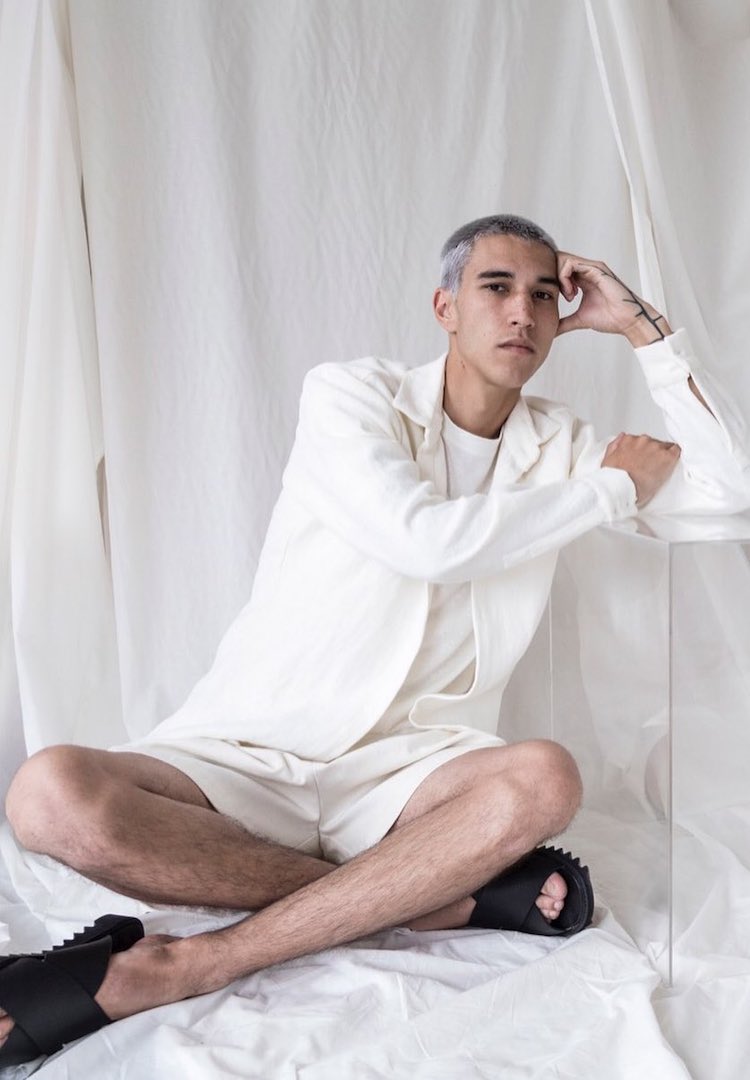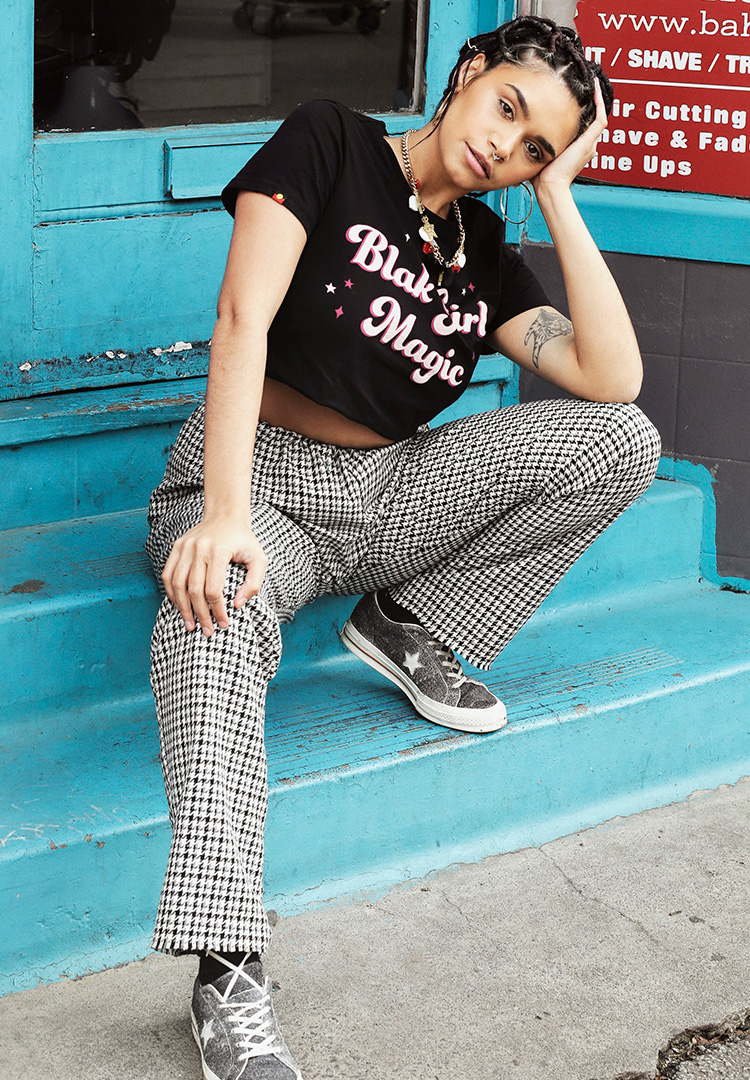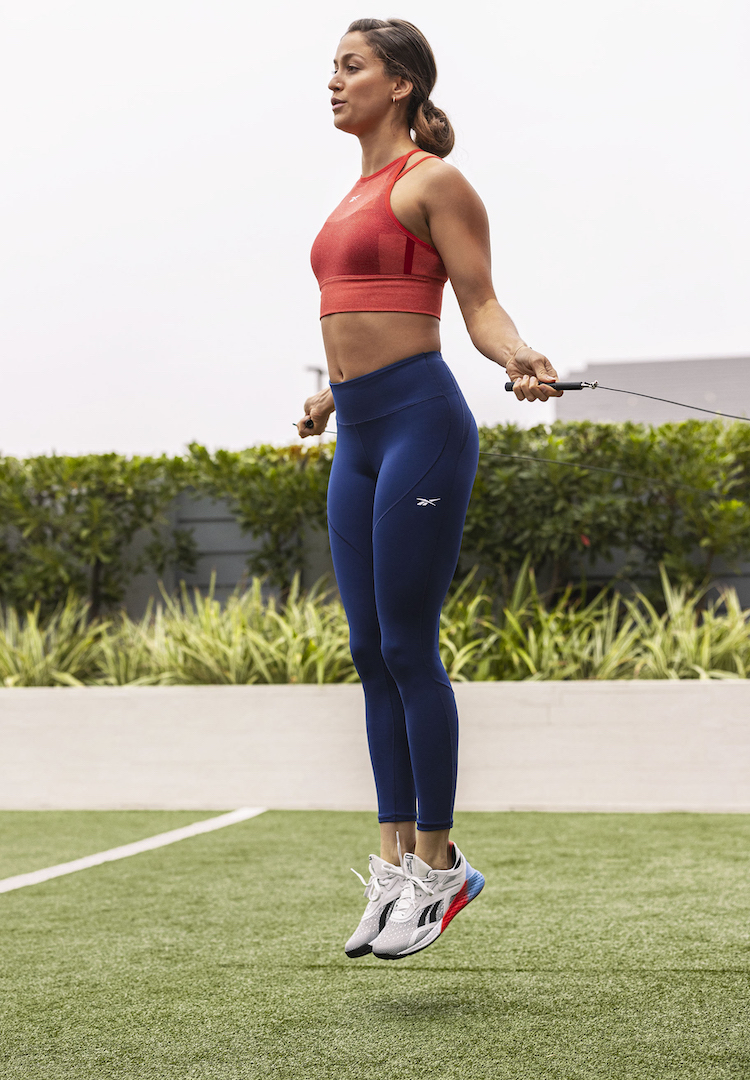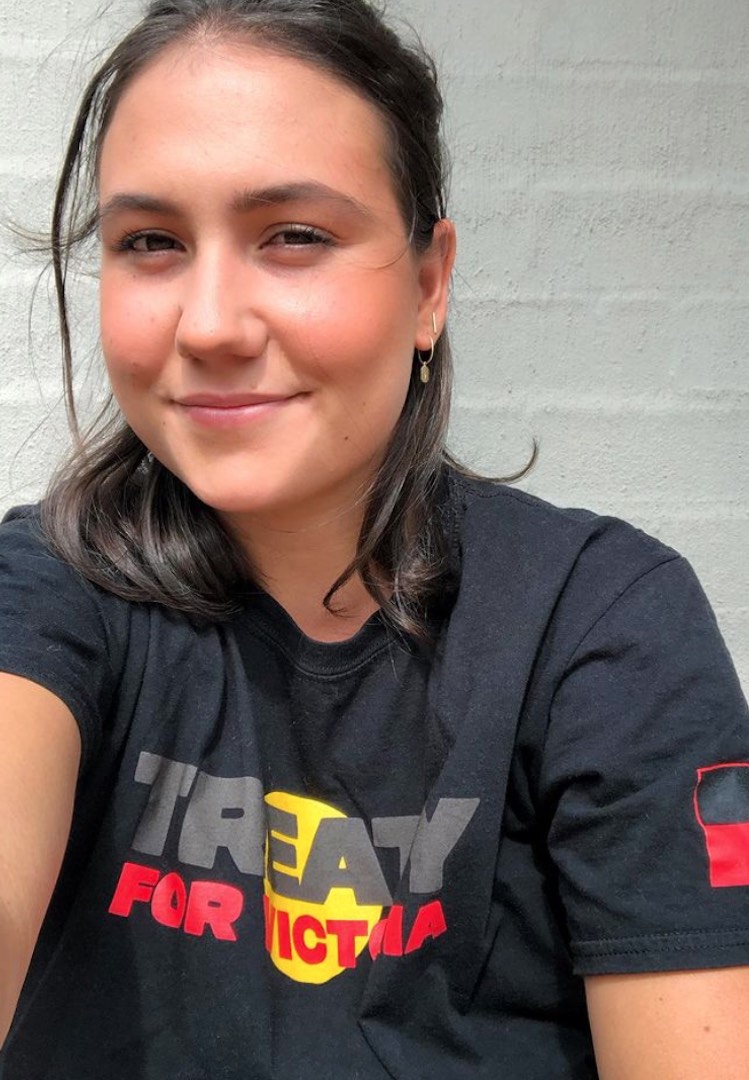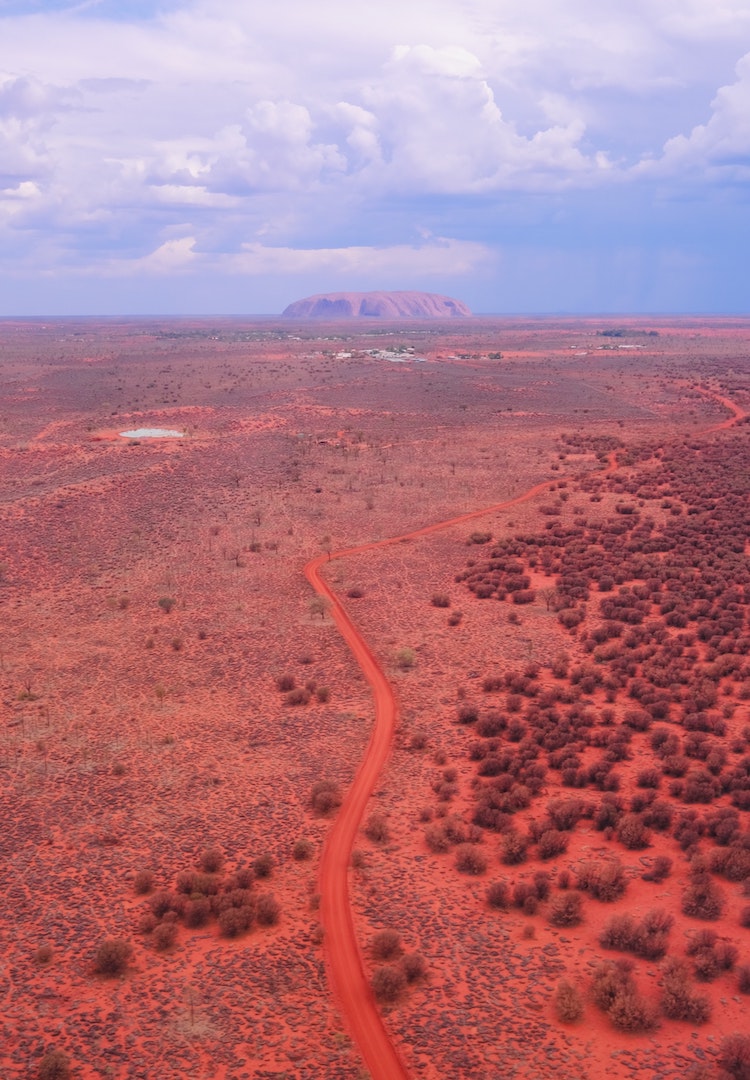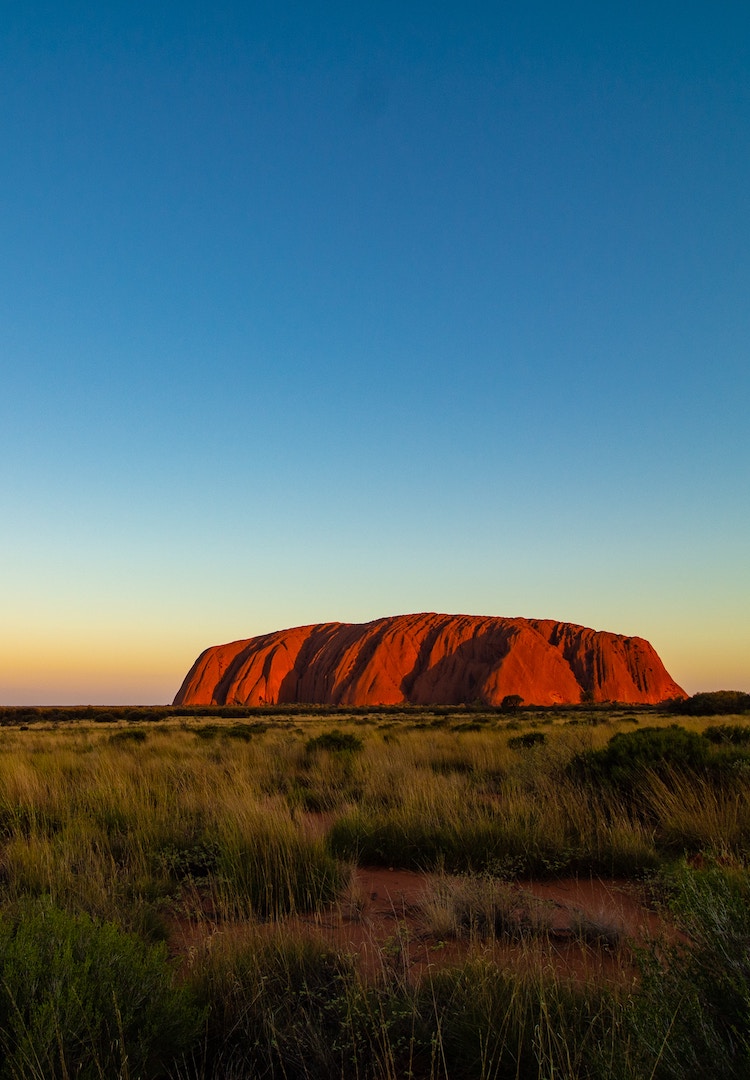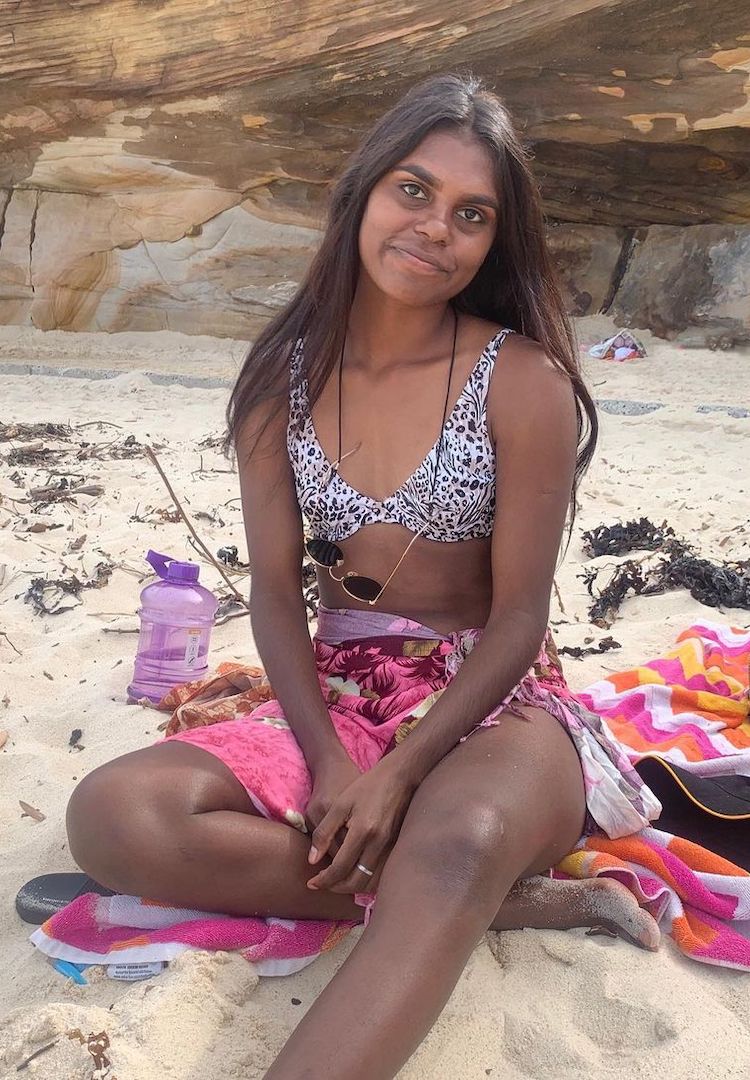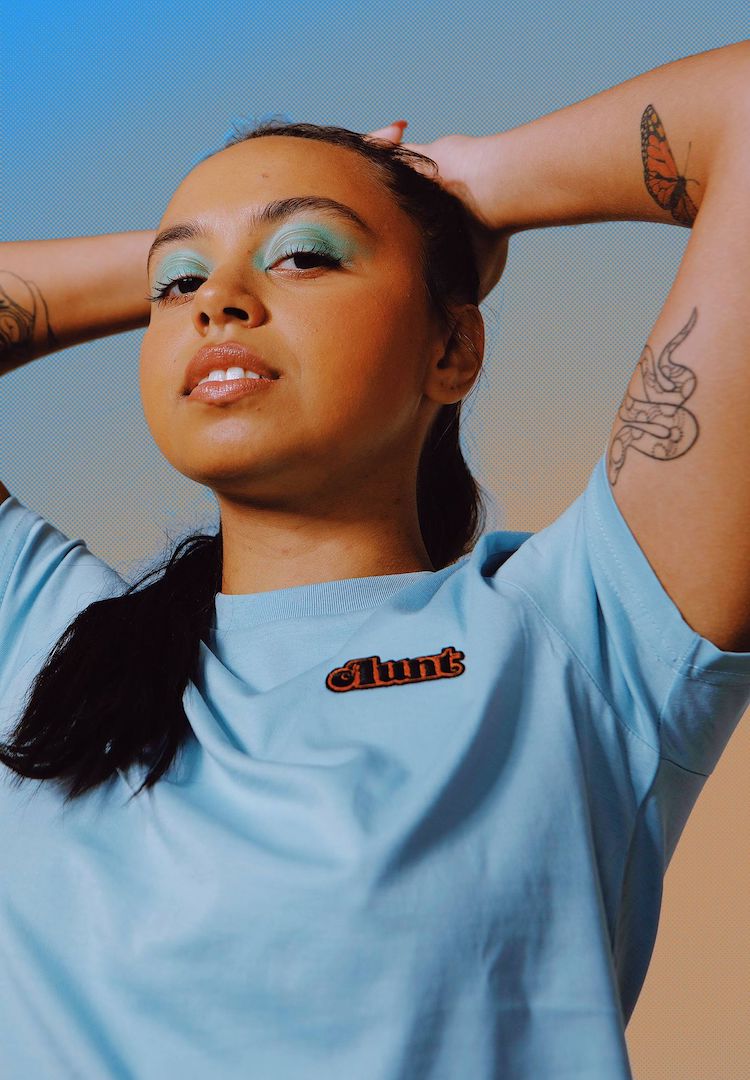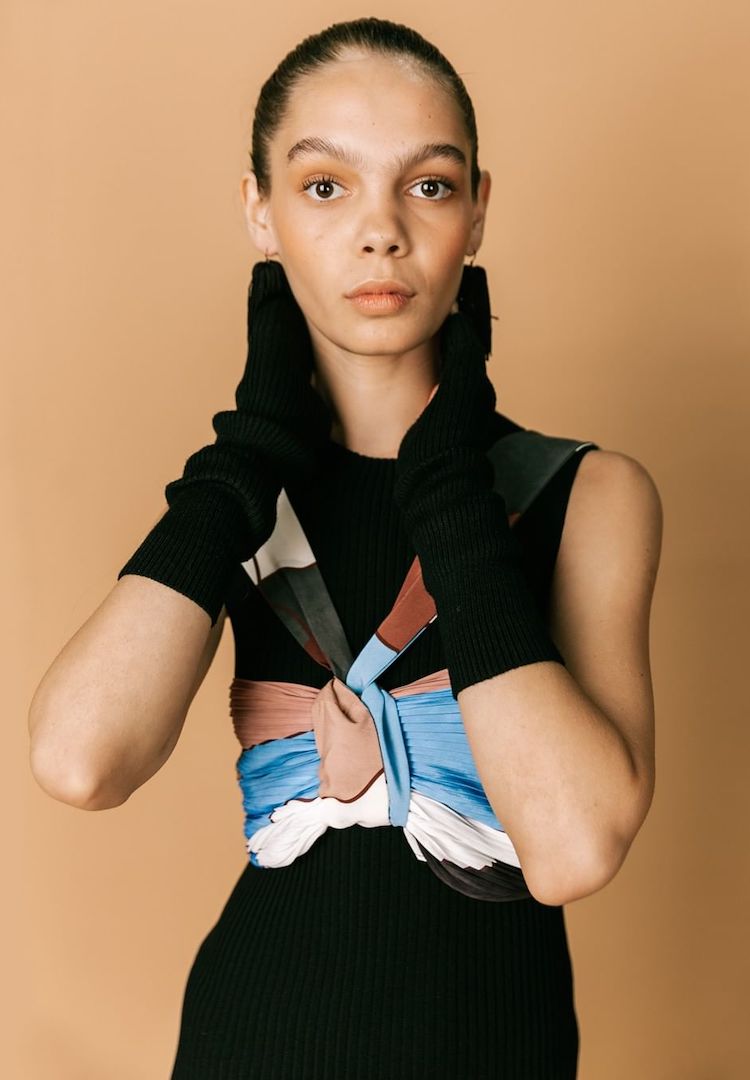How fashion can be a tool for Indigenous activism
IMAGES VIA GAMMIN THREADS
WORDS BY JASMINE WALLIS
Three Indigenous fashion labels tell us how they use fashion as an access point into broader social and political conversations.
When browsing Clothing the Gap’s online store you’ll find a number of items – hoodies, tote bags, shirts and beanies – featuring Aboriginal artwork, or messages of Indigenous significance (“Always Was, Always Will Be” and “Not the Date to Celebrate”).
You won’t, however, see the Aboriginal flag.
“The Aboriginal flag is the only one in the world with a copyright on it,” explains managing director of Clothing the Gap and Gunditjmara woman Laura Thompson. “If we were to make Australian or Italian flag products on our top it would’ve been fine but because we used our Aboriginal flag, we had to pay an additional 20 per cent to a non-Indigenous company who have exclusive worldwide rights to use it.”
This is because the flag exists as a copyrighted work; the only in the world to do so.
This, despite the flag being designed by Indigenous man, Harold Thomas, and having been recognised as a flag of national significance by the Australian Government since 1995. As the creator of the flag, Thomas owns its image and can grant licences to other parties to make copies of the flag.
One such licence has been granted to a non-Indigenous company, WAM Clothing, who has exclusive use of the flag’s image on clothing. This means Clothing the Gap and other Indigenous designers and makers are barred from using the flag by law unless they pay a premium.
It was this discovery, and a cease and desist notice landing on the desk of Clothing the Gap for using the flag on its designs, which spurred the brand into using its fashion platform for Indigenous activism. “We just thought it was the most ridiculous thing,” says Laura. “We had to sell the products within three days.”
In response, Laura and her team launched the Free the Flag campaign, calling for members to lobby against its copyright. As part of this, they started a petition called ‘Pride Not Profit’.
“We took a stance that no one should have to ask or pay for permission to use the flag. We’ve got 55,000 signatories on that and had the petition tabled in Parliament.”
Sianna Catullo, a Narungga woman and Clothing the Gap’s chief creative officer describes these copyright laws as a “contemporary form of colonisation”. She explains that the Free the Flag campaign was where Clothing the Gap’s advocacy work began., “It wasn’t until we did the campaign that we said ‘Okay, what other causes do we care about? What other campaigns do we want to work on and use fashion to drive that?’”
Clothing the Gap – a play on words of the Australian Government’s Closing the Gap health initiative – is an Aboriginal owned and led social enterprise. Starting out as using clothes as an incentive to get people to participate in their programs at Spark Health, with the leftover pieces they didn’t give away, the team began to sell the merchandise online.
They soon realised that there was a strong desire for Indigenous-designed clothing and that an extra revenue stream could be used to support their health initiatives. Today, Clothing the Gap puts 100 per cent of its profits towards Aboriginal health promotion and education in Victoria.
“When we first started, it was a way to get Aboriginal people to wear their identity proudly and for the non-Indigenous people, it was a way to support Aboriginal people and culture. But as time progressed it sort of became an advocacy platform as well. A brand that stood for things.”
Like Clothing the Gap, Tahnee Edwards from Gammin Threads is also using slogan T-shirts to make a political statement. A proud descendant of the Yorta Yorta, Taungurung, Boonwurrung and Mutti Mutti nations, Tahnee has created loud, fun, colourful, shirts, accessories and hoodies that amplify both her heritage and design skills. The clothing features phrases such as ‘Big Aunty Energy’, ‘Blak Girl Magic’ and ‘You Lubly’.
Speaking to Fashion Journal last year, Tahnee stated that designing these pieces was her way of adding her voice to the Indigenous activist space. “This is my way of activating my voice and getting my message across because I’m not heaps articulate or outspoken like a lot of the people that I look up to who are organising the rallies. But this is my way of getting my own views and some of my community’s views across.”
A conversation starter
Another brand to use its fashion designs to raise awareness of Indigenous issues is Regina Jones from Ginny’s Girl Gang. Ginny, a Gamilaraay woman who now resides in the United States, paints her artwork and activist slogans including ‘The Future is Indigenous’ and ‘Royalty Inside my DNA’ onto denim and leather jackets as well as hoodies and overalls. Each piece is custom made.
Talking us through her designs, Ginny told Fashion Journal from her home in Atlanta that her first jacket was designed for her Indigenous musician friend and was inspired by Kendrick Lamar’s track ‘DNA’.
“I really believe that our people’s DNA is so special. My designs are very intentional. Indigenous people have been sharing and storytelling for 60,000 years so it’s important that in creating, I do the same. It starts with the message and then the story, through this process of yarning, the story comes together and the design emerges.”
Named after her relationship with her three nieces, Ginny’s Girl Gang aims to create a space for Indigenous people who want their voices to be heard. “They are the next generation of women who are proud of their culture, empowered by who they are, and continue to share their culture.”
Ginny’s fashion activism took a literal step onto the world stage back in February this year when comedian Celeste Barber wore Ginny’s ‘Always Was, Always Will Be’ jacket design to host the Fire Fight Australia Relief Concert. It was attended by 70, 000 people and watched by millions more at home.
“It was super crazy and a moment I will remember for the rest of my life. But my greatest achievement is that every day I have people message me telling me how proud they are and that my messages help people feel heard.”
Although Ginny’s goal of creating conversations through fashion is already happening, she wants to elevate that even further going forward. “I want to create an opportunity for change and I really believe we can do this through fashion. I want to find opportunities to collaborate with more Indigenous brands here and internationally and also larger companies to further spread our messages through fashion to the world.”
Giving back to the community
Translating to “we” or “us” in a number of Aboriginal languages, Ngali is a womenswear label using fashion to support Indigenous communities. Founded in Melbourne by Denni Francisco, a Wiradjuri woman, Ngali was born out of a desire to connect more deeply with her culture and to work with other Indigenous creatives.
With a background in design after starting a childrenswear label, Billiecart, in the late ’90s, Denni launched Ngali in September 2018 at the Melbourne Fashion Festival’s Indigenous Runway event, First Born.
Speaking from her studio at the Collingwood Arts Precinct in Melbourne, Denni says her first range was based on her own photography of the variety of gum trees that show up across Australia, something she translated into a fabric print. Shortly after that, Denni met Lindsay Malay, a Giji artist, at the Darwin Aboriginal Art Fair and the two have been working together on prints ever since.
“We just had this instant connection,” says Denni. “I think it’s fantastic to be able to support emerging artists and give them a platform and promotional opportunities.”
On top of working with other Indigenous creatives, Ngali also prioritises giving back to the Indigenous community. As part of the Buy 1 Give 1 Business for Good initiative (B1G1), every purchase made from Ngali gives young people living in remote Aboriginal communities access to IT and literacy skills.
“I’ve always been really passionate about education, and so I felt it was important to have a business for good and to run a social enterprise organisation,” says Denni.
“Our kids in remote areas just don’t have the access that kids in urban areas have. We looked at what we could do to support and advance their educational opportunities so they’re not left behind and so they can stay and make meaningful contributions to their communities if that’s what they choose to do.”
Ngali has also supported the Indigenous community by inviting children from the Warmun Arts Centre to help in the creation of last year’s winter range.
“They were coming in and painting and we thought it would be a fun thing to invest in putting their artwork into some of the garments. It wasn’t a commercial operation at all. We just funded that so we could show the video to the kids in Warmun and they felt like they had a reach into the city and could see and celebrate their own artworks on some of the garments they did.”
Like Clothing the Gap and Ginny’s Girl Gang, Ngali’s purpose is to share activism, stories, and culture. But Ngali also aims to educate consumers and help them understand what they’re buying and how it impacts on the environment around them.
“One of the other reasons for starting Ngali was [that] through fashion we get to share our stories in a way where people get to learn more about our culture. So if we extend that out through fashion in general then we can help to educate consumers in making good choices around what they buy, how they buy, and when they buy.
“When we talk about the impact of fashion and think about the life of that garment we’ve got to think about the journey. For Indigenous people we talk about our story, we could also too talk about the journey of a particular garment. Are they passed on? Are they reused, recycled, upcycled?” Denni asks.
Whether it’s mobilising campaigns like Free the Flag, making a bold political statement through a denim jacket or empowering Indigenous children, it’s clear that fashion is simply an access point into a wider political platform and conversation. And it’s a conversation that is desperately needed, not just during Reconciliation Week, but all year round.
Just before we hang up the call, Sianna sums up the topic of conversation perfectly.
“Why does fashion have to be pigeon-holed into a certain thing where you only wear clothes because you think it looks good or because someone else is wearing it? Why can’t it be more than just looking good? That’s why we say ‘Wear your values on your tee’ because you’re standing for something and that can make an impact.”

